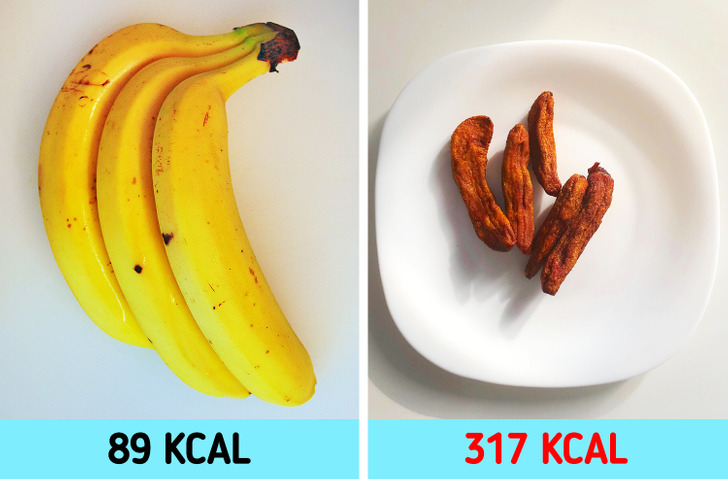How Many Calories There Are in Dry and Cooked Products
It is believed that a person absorbs more calories not from raw, but from cooked food. At the same time, the calorie content of a certain product can change depending on how exactly you cook it. For example, if a regular egg is boiled, its calorie content won’t change much, but if you fry it, its calorie content will increase instantly. This information is not always on product packaging because manufacturers indicate the calorie content of products in the form they are in the package.
5-Minute Crafts is comparing the calorie content of regular products before and after they have been cooked.
Potatoes
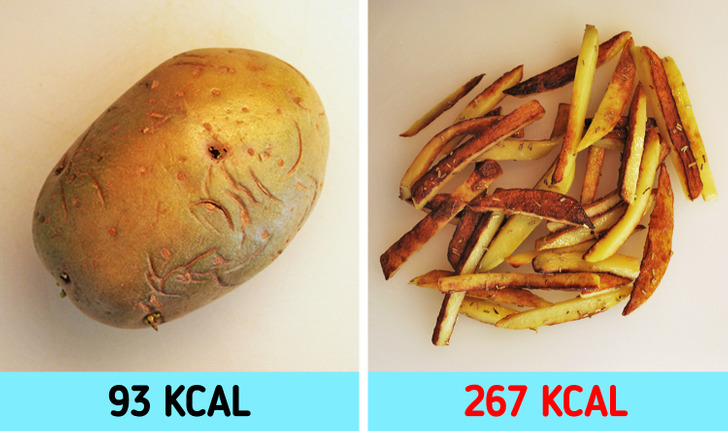
Rice
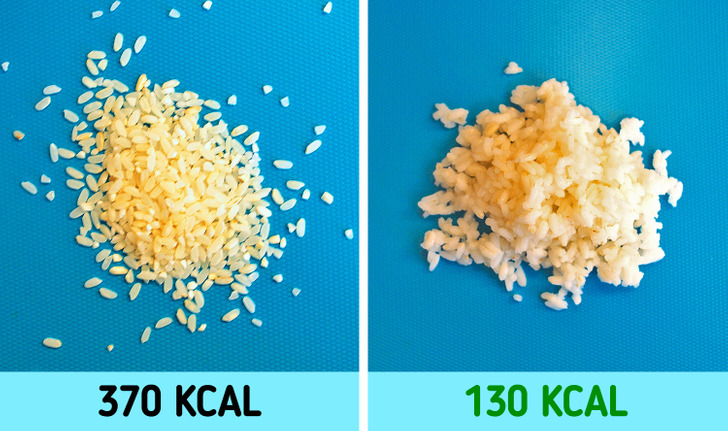
Things are different with rice. The package normally indicates the calorie content of the dry product. If you take 100 g (3.5 oz) of dry rice, which contains 370 kcal, and boil it, it will result in decreasing the calorie content of this 100 g (3.5 oz) to 130 kcal. It happens because rice swells during cooking and increases in size and weight (but the calorie content of the product doesn’t actually change).
The situation with other groats is the same — they swell during the process of boiling and their weight grows, which is why 100 g (3.5 oz) of ready groats will have fewer calories than 100 g (3.5 oz) of dry ones.
Pasta
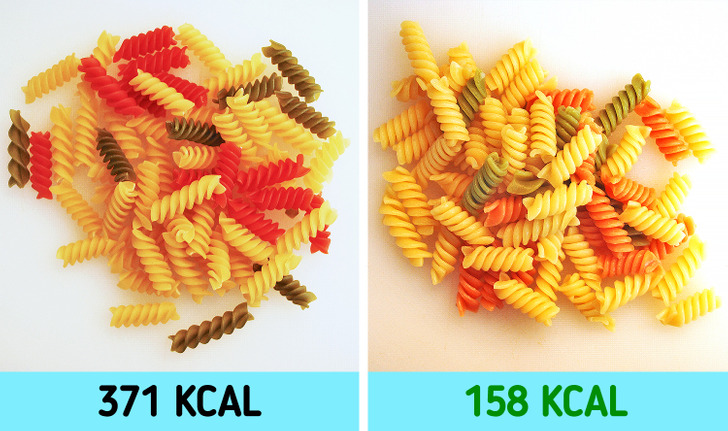
Meat
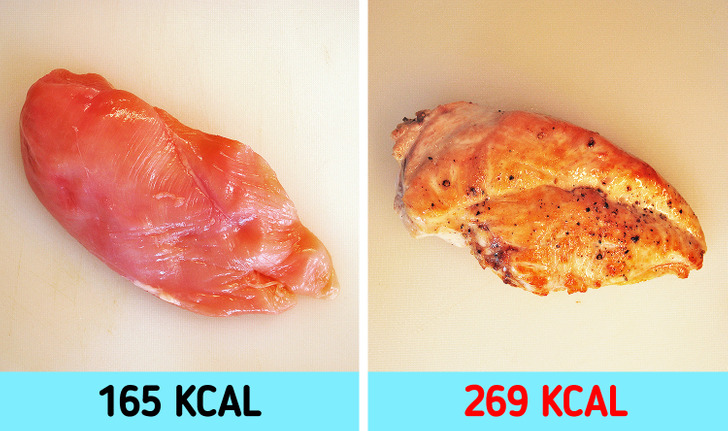
100 g (3.5 oz) of raw chicken fillet contains about 165 kcal. But if you fry it, the meat will absorb the oil and the calorie content will grow to 269 kcal per 100 g (3.5 oz). Boiled chicken contains much fewer calories. Things are almost the same when it comes to beef and pork. By the way, using a marinade can also increase the calorie content of cooked meat.
Sometimes it’s not about heat treatment — meat can change its calorie content as a result of salting. For example, 100 g (3.5 oz) of lightly salted salmon contains 254 kcal, while wild fresh salmon is almost 1.5 times less caloric.
Cereals/muesli
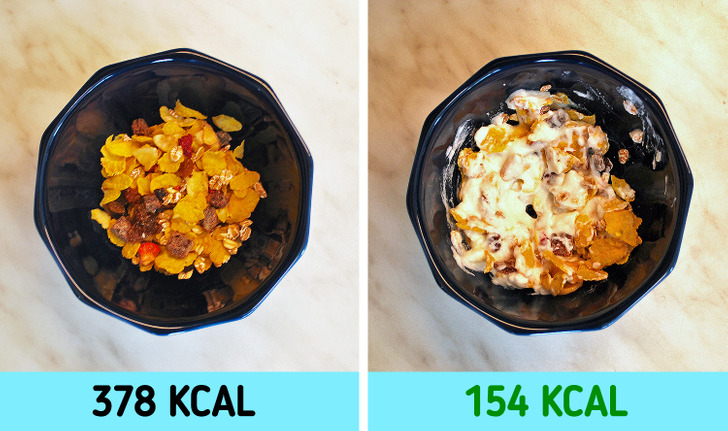
The package on cereals indicates the calorie content without milk or yogurt, which cereals or muesli are normally complemented with. If you take 100 g (3.5 oz) of muesli, whose calorie content is about 400 kcal, and mix it with yogurt, then 100 g (3.5 oz) of the prepared breakfast can decline to about 150 kcal (it depends on the amount of yogurt and its calorie content).
Chicken eggs
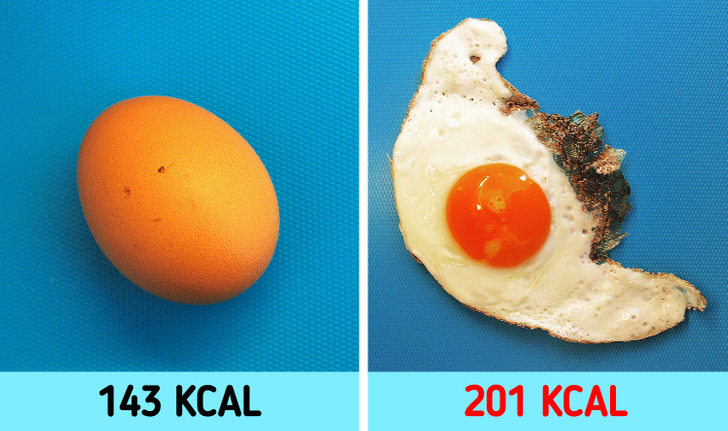
Bananas
